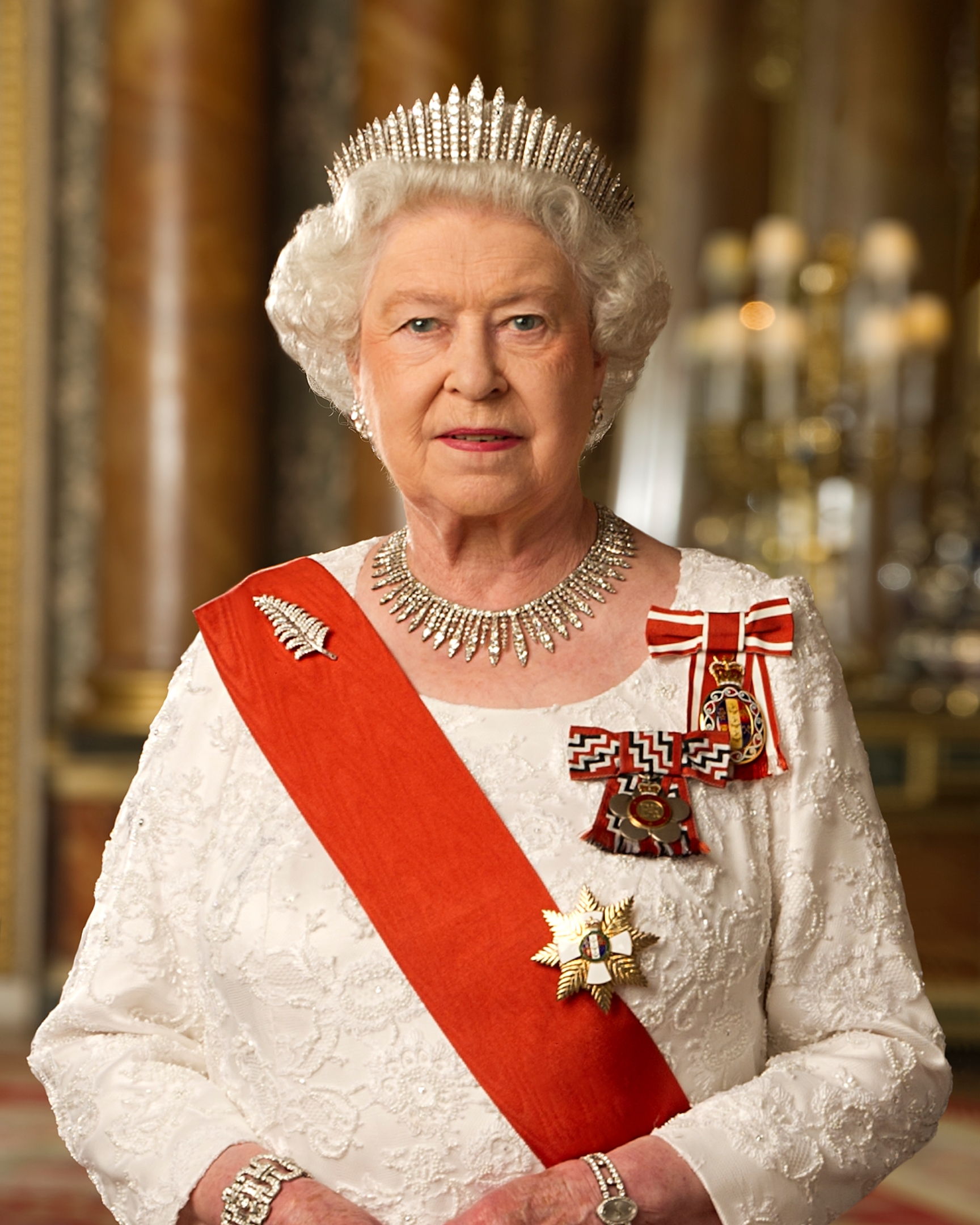Was Edward IV Illegitimate? (And Why It Doesn't Matter)

You may or may not have seen Tony Robinson’s 2004 documentary Britain’s Real Monarch, in which he proposes that King Edward IV of England (1442-1483), who reigned from 1461 until 1470, and again from 1471 until his death, was illegitimate, therefore had no claim to the throne, and that all subsequent monarchs – as his descendants (including Queen Elizabeth II) – have no legitimate claim to the throne either. He proposes that Edward’s younger brother George Plantagenet, 1st Duke of Clarence (1449-1478) – whom Edward executed – was the legitimate heir to the throne, and that therefore George’s senior legitimate descendant (by male-preference primogeniture) Michael Abney-Hastings, 14th Earl of Loudoun (1942-2012), a British peer living in Australia, was the then-rightful King of England (which by extension means that since his death, his Australian son Simon Abney-Hastings, 15th Earl of Loudoun (b. 1974) is the current rightful King).

There are, however, multiple problems with this.
First off, some background information: Edward IV was born on 28 April 1442, the second son – but eldest surviving – of Richard Plantagenet, 3rd Duke of York (later Prince of Wales) (1411-1460) and his wife Cecily Neville, Duchess of York (and later Princess of Wales) (1415-1495). His father Richard was the senior legitimate descendant of King Edward III of England (1312-1377) according to male-preference primogeniture, and was thus a fierce rival of his cousin King Henry VI, whom he fought for the throne, dying just a year before Henry’s deposition.


Now, what is the reasoning used for King Edward’s alleged illegitimacy?
Well, assuming that Edward was born neither early nor late, then he would’ve been conceived in either late July or early August 1441 (since he was born on 28 April 1442). In 1441, Richard and Cecily lived in Rouen – but between 14 July & 21 August, Richard was in Pontoise, lifting the siege on the city.
It’s generally argued that Edward couldn’t have been premature since that would’ve been recorded, and therefore he couldn’t have been Richard’s son since the two were “over 100 miles apart” at the presumed time of conception. Also, unlike some of his other siblings, Edward received a low-key baptism. He also didn’t look much like Richard, and unlike Richard, was rather tall.
That’s the main evidence for Edward’s illegitimacy; some also point to a claim that Cecily threatened to oust Edward as illegitimate when she heard his choice of bride, but there’s little evidence that that exchange ever took place. It’s like the claims of Queen Elizabeth II being mad at Meghan, Duchess of Sussex, or the general press claims about the Duchess: no evidence or particular reason to believe it, just gossip and rumours.
What about the other claims? Well, whoever originated the claim that Pontoise was “over 100 miles” away from Rouen was extremely ignorant about French geography; the two cities are actually about 57.6 miles, or 92.7 kilometres, apart, and in medieval times they were connected by a Roman road. In short, the distance is much shorter than what some Edward-was-illegitimate promoters would have you believe. Some say it’s feasible that Richard could have come to Rouen during that time for a brief visit or two to his wife – or perhaps she could have briefly visited him.
But another important detail is that whereas Richard’s whereabouts during this time are documented, Cecily’s are not. Despite some claims, it’s not known for certain whether she stayed in Rouen during this time, or whether she accompanied her husband to Pontoise. If she did accompany her husband, then dates of conception are no objection to Edward’s legitimacy.
And even if she didn’t accompany her husband, and Edward was Richard’s son, then he was only born either 2 weeks late or 3 weeks early. One of my brothers was 2 1/2 weeks late (now THAT was a wait!). And despite some claims, premature births weren’t always noted as premature back then. And given the higher infant mortality rates & the belief that unbaptised babies couldn’t be saved, a premature baby would be likely to have a quick, low-key baptism – exactly the baptism that Edward IV received. A premature birth would be especially worrying for the Yorks since they lost an infant son just a year before Edward’s birth – all the more reason for a quick, hurried baptism.
You’ll find some claim that if Edward was Richard’s son, then he would’ve had an 11-month pregnancy. As anyone can determine by simple maths, if he was overdue, it was probably a 9 1/2 month pregnancy, which my mother has had TWICE.
What about King Edward IV not looking like his father, the Duke of York? I don’t look like my father. Does this make me not my father’s son? No! I look like my mother. No contemporaries noted whether or not Edward looked like his mother, or one of his 4 grandparents. (And yes, sometimes someone will look more like one of their grandparents than one of their parents – Henry VIII, for example, apparently most resembled his grandfather Edward IV, the subject of this article.) Medeival paintings aren’t the best way to compare resemblance, but I’d say that Edward didn’t look unlike his mother.
What about his height? Edward’s forebearers on BOTH sides included many tall people (Richard and Cecily were second cousins), with Cecily’s grandfather John of Gaunt being famously over 6 foot. Throwbacks are a thing – for example, no-one knows where my Mum’s olive skin comes from, as her entire family is white (and yes, she resembles her father – my grandfather; plus, I know my grandmother quite well).
AND the resemblance and height, if used as evidence for Edward’s “illegitimacy”, also implicate his brother George – the one Tony Robinson and others tout as the “rightful heir” – as George and a couple of the other York children were noted to resemble Edward and be unusually tall. IF Edward was illegitimate and inherited his looks & height from his biological father, then the Abney-Hastings simply don’t have a claim to the throne.
WHY IT WOULDN’T MATTER EVEN IF EDWARD WAS ILLEGITIMATE
Edward IV didn’t inherit the throne; he seized it by force. He gained the throne BY CONQUEST, same as William the Conqueror – WHO WAS INDISPUTABLY ILLEGITIMATE, yet no-one questions the legitimacy of his successors. EDWARD’S ALLEGED ILLEGITIMACY, IF TRUE, HAD NO EFFECT ON HIS LEGITIMACY AS SOVEREIGN.
ADDITIONALLY, APART FROM HIS OWN SON EDWARD V, NO SUBSEQUENT ENGLISH OR BRITISH MONARCHS DERIVED THEIR CLAIMS TO THE THRONE FROM EDWARD IV. Yes, you read that right. Whatever legitimacy Edward did or didn’t have as King of England had and has NO EFFECT WHATSEOVER on his successors (apart from Edward V); for just two years after Edward IV’s death, his distant cousin Henry Tudor seized the throne BY CONQUEST, becoming King Henry VII. In order to end the war between the two factions of the Royal Family – the houses of York and Lancaster – he married Edward IV’s daughter Elizabeth of York. Thus, while subsequent monarchs descend from King Edward IV, his legitimacy or illegitimacy has no effect on them – and thus no effect on Queen Elizabeth II.

Plus, is it REALLY reasonable to tell a 94-year-old woman “You and your entire family are fired because one of your ancestors committed adultery 580 years ago”? I don’t think I need to say that the answer is an obvious, firm NO! If you think that is reasonable, I suggest stepping back and reevaluating your moral compass.
ADDITIONALLY, Parliament’s supremacy over the monarch is a well-established legal principle fought for in blood. Whoever PARLIAMENT recognises as the Sovereign is the legitimate, rightful Sovereign, and whoever Parliament recognises as making up the Line of Succession makes up the rightful Line of Succession. In short, the only “rightful” monarch is the actual, incumbent monarch – currently Queen Elizabeth II.

IN CONCLUSION
The “Edward IV was illegitimate” theory doesn’t have a solid footing, and doesn’t make a difference anyway. There is no “rightful heir” hiding away somewhere; there is the Queen, and there are persons who might have been King/Queen if history had gone differently.
http://authorherstorianparent.blogspot.com/2013/01/a-study-in-medieval-fertility-richard.html
https://www.historyfiles.co.uk/FeaturesBritain/Medieval_EdwardIV_01.htm
Comments
Post a Comment